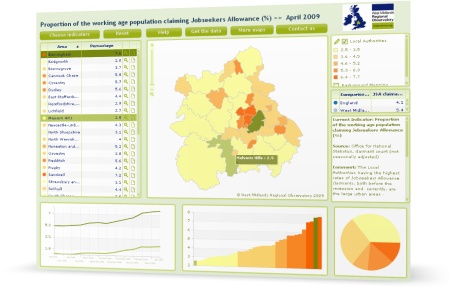56 proposals for local enterprise partnerships across the country have been submitted, the government has confirmed, following the closing day for submissions.
There are seven proposals from the West Midlands:
- Birmingham and Solihull with East Staffordshire, Lichfield and Tamworth: two page summary (pdf, 17kb) and the full proposal (doc, 243kb)
- Coventry and Warwickshire (doc, 3.5mb)
- Stoke-on-Trent and Staffordshire (pdf, 1.3mb)
- The Black Country (pdf, 2.74mb)
- The Marches Enterprise Partnership (pdf, 1mb) – Herefordshire, Shropshire and Telford & Wrekin
- West Midlands (an overarching proposal from Business Voice West Midlands)
- Worcestershire (pdf, 603kb)
Three distinct responses in respect to cross boundary working arrangements have also been received from Peak District, South East England and West Leicestershire and Northern Warwickshire.
Here’s the full list of proposals.
Filed under: Birmingham, Black Country, City Region, Coventry, Economy & Labour Force, Geographical Information, Herefordshire, Regional Data and Intelligence Network, Shropshire, Solihull, Staffordshire, Stoke-on-Trent, Telford & Wrekin, Warwickshire, West Midlands, Worcestershire | Tagged: economic development, LEPs, local enterprise partnerships | 2 Comments »


 Last Friday, for the first time in its history, we brought together all the groups associated with the
Last Friday, for the first time in its history, we brought together all the groups associated with the  Guest blog post by Jim Morton, Applications Architect at
Guest blog post by Jim Morton, Applications Architect at 
 The Office for National Statistics (ONS) are holding a
The Office for National Statistics (ONS) are holding a 

 This guest post was contributed by Christopher Styche from the
This guest post was contributed by Christopher Styche from the  This is a guest post written by
This is a guest post written by 


